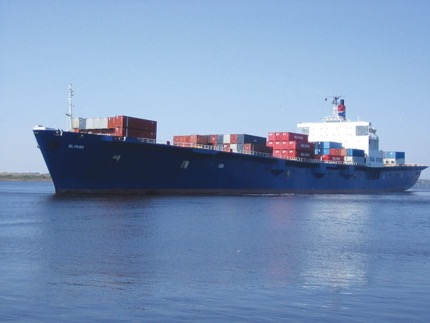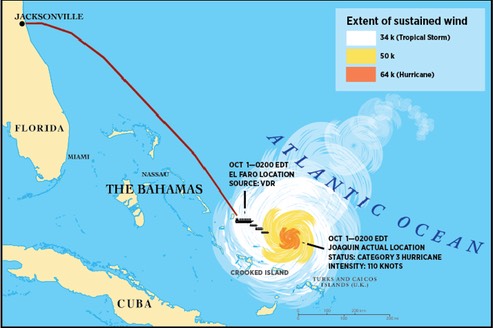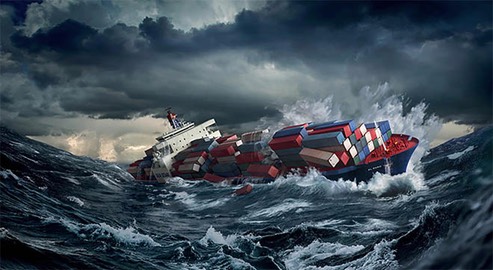The Last Hours of El Faro



When [El Faro's] engine shuts down, [Hurricane] Joaquin’s center is a mere twenty-five miles to the southeast; the opposite direction from that which [Captain] Davidson expects, as if the storm were deliberately trying to lunge under his guard. El Faro, disabled and helpless, lies almost within the eye, inside its circle of strongest winds...
Joaquin is now approaching Category 4 status, winds averaging 115 knots, gusting to 130 — close to 150 mph.... occasionally, a wave will reach close to fifty feet, the height of a five-story building, a dark mass of water streaked like a rib-eye steak, only instead of fat veining the liquid flanks, these are white tendons of watery fury stretched by the massive energy of wind; and the wave tops are impossible to see, for that same wind is shearing off the waves’ summits and using them to rocket some matter that is neither sea nor air but an abrasive mix of spume and salt water, a slurried ganache of surf that will rip clothes from the body and drown the very breath in your throat. On El Faro, even as what momentum she has left keeps her heading, temporarily... Clearly the list is going from bad to worse, and the rate at which it’s getting worse is speeding up...
Those words from the the June 2018 issue of Soundings, are an excerpt from the book RUN THE STORM: A Savage Hurricane, a Brave Crew, and the Wreck of the SS El Faro by George Michelsen Foy. They describe the last moments before the M/V El Faro and her crew met their doom.
In addition to the National Transportation Safety Board report, a lot has been written about that fatal voyage. Over the years, there have been several other similar events. There is a lot to be learned, or should I say re-learned.
Like similar disasters, there are a string of often ignored indicators that lead up to the final moment.
/fl
